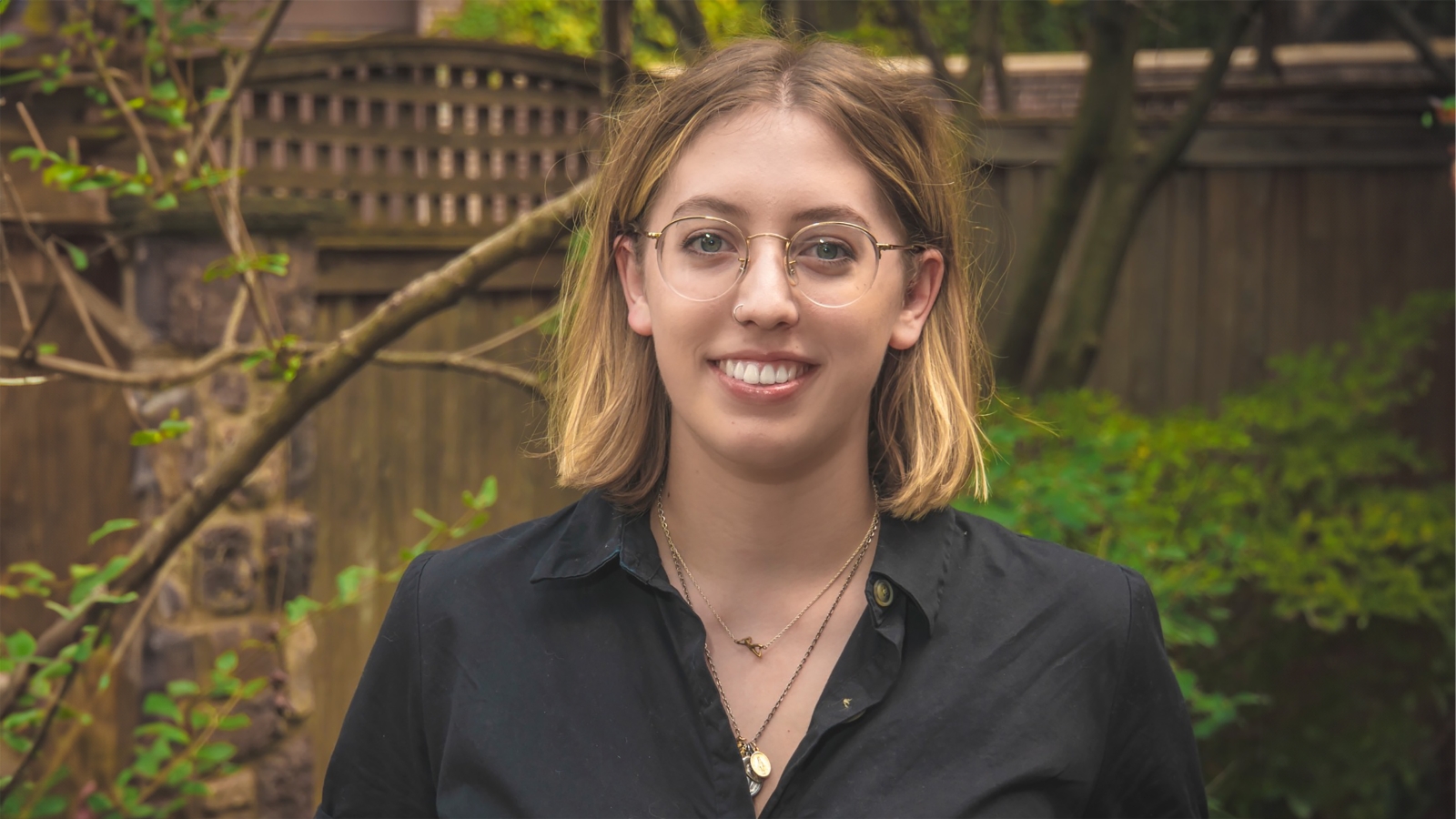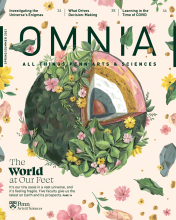The Histories We're Given
Melina Lawrence, C’21, contrasts two Philadelphia statues to illustrate how monuments can distort the past.

When Melina Lawrence, C’21, began her first year at the College in August 2017, Philadelphia’s downtown landscape was in flux. Calls to remove a 20-year-old statue of controversial former police commissioner and mayor Frank Rizzo from John F. Kennedy Boulevard were escalating, just as officials prepared to unveil a memorial honoring 19th-century civil rights activist Octavius Catto 300 feet away at City Hall.
These concurring events intrigued Lawrence, an architecture and urban studies major who was already paying close attention to clashes over Confederate monuments across the American South.
“I’m interested in how the design of public space relates to equity, identity, and representation,” Lawrence says. “The memory of a person can be concretized in a material object, but that memory will constantly be reinterpreted and re-evaluated as modern events unfold.”
Over the next few years, as a spike in hate speech and the murders of several unarmed Black Americans sparked nationwide protests against police brutality and systemic racism, Lawrence watched the Rizzo and Catto monuments take on distinct meanings, evolving to symbolize opposite sides of ever-intensifying political and ideological divides. Protesters repeatedly attacked and vandalized the Rizzo statue, which depicted a man known for his outwardly racist policies and rhetoric, while using the Catto statue—the first in Philadelphia to memorialize a Black individual— as a gathering site for peaceful demonstrations.
Lawrence decided to write her senior thesis on this phenomenon.
“What started with debates about Confederate statues grew into a broader look at the presentation of history in all urban landscapes. How are we representing—or misrepresenting—memories?” she asks. “Rizzo was notoriously divisive, but his statue was put in motion right after he died by people who wanted to solidify him as a great man. Then there’s Catto, who really was an incredibly important, forward-thinking activist for his time but was essentially lost from Philadelphia’s history from the 1800s until 2017.”
In contrasting these statues and the meanings ascribed to them, Lawrence shows that public monuments frequently impose altered versions of reality and harm people who have been marginalized throughout history. She argues that removing problematic monuments—like the City of Philadelphia did with the Rizzo statue in June 2020—does not “erase” history, but rather helps communities heal from trauma and reshapes the messages their municipalities present to the world.
“The main thing I want to emphasize is that monuments do not equal the truth in Philadelphia or anyplace else. It is important that we think about who we memorialize, what values they represent, and how they influence the way people identify themselves in relation to others,” says Lawrence, who will begin a master’s program in city and regional planning at the Pratt Institute in Brooklyn this fall. “We all need to question the histories we’re given.”



